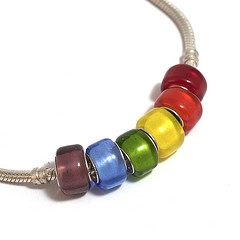
Choosing a Ring Prong Setting
Gold, platinum and silver rings offer variety different settings. Before you go out and buy an engagement ring, wedding ring or other ring, take a look at this brief guide to the various ring prong settings that are currently available.
Engagement Ring Settings
The prong setting, also called a claw setting, is the most commonly used setting.
The prong setting is especially popular for solitaire engagement rings. The diamond or other gem is inserted into three or more metal prongs forming a basket-like base. Then the prong ends are bent over so they rest against the crown, just past the stone’s girdle, holding it snugly in place.
Visible prong ends are often rounded, but they can be shaped into ovals, points, V-shapes, left flat or even formed into decorative shapes. The prong setting can be tall, perching the diamond above the ring band. Likewise, it can also be short, with the stone resting closer to finger.
Prong Setting Benefits and Disadvantages
Prongs are tiny, so more of stone is visible. Furthermore, prong settings are easy and quick to make and they are usually less expensive than more intricate settings. Finally, stones set in prongs are usually easier to clean.
There are some drawbacks to a prong setting that you should be aware of. The girdle area of the gemstone is not covered and prongs offer less protection for stone than other, more enclosed settings. On top of this, prongs can snag clothing and other items they come in contact with.
Evaluating Prong Settings
If you are going to buy a ring with a prong setting then you should carefully consider some the following points:
1. Make sure that the gemstone is held snugly, and does not wobble.
2. The prongs should be formed so that the stone sits at even height and is not up or down on any side.
3. Very thin or flat prongs will eventually break or wear away, putting the gemstone at risk.
4. Hooked prongs or prong ends that form an open loop before they touch the stone, will open up in time.
5. Short prongs, which provide enough contact with the gemstone, won’t hold it safely in place and can catch on to clothing and other items.
6. Large prongs may overpower gemstone, making the setting less attractive.
7. If you have or plan to have children, you wouldn’t want to wear a tall, narrow setting that could scratch or puncture delicate skin.
Finally, a professional jeweler may have diagrams that help you to visualize these and other types of prongs. Ask your jeweler if he or she has prong diagrams.
You should also be aware that prongs may need to be repaired over time.
Ask your jeweler to show you several prong settings and ask for advice on the safety and durability of each.
Trying many rings is best way to discover how different settings feel and look.
About the Author
Lewis Jewelers is proud to carry the full line of
Pandora Jewelry
. Pandora bracelets, Pandora charms and Pandora beads are only a part of the collection. For more information, Lewis Jewelers, 2000 West Stadium Blvd., Ann Arbor, Michigan, 48103, 877-88-LEWIS or visit the website.
Glass Jewelry genuine Murano Glass made in italy – www.murrinashop.com